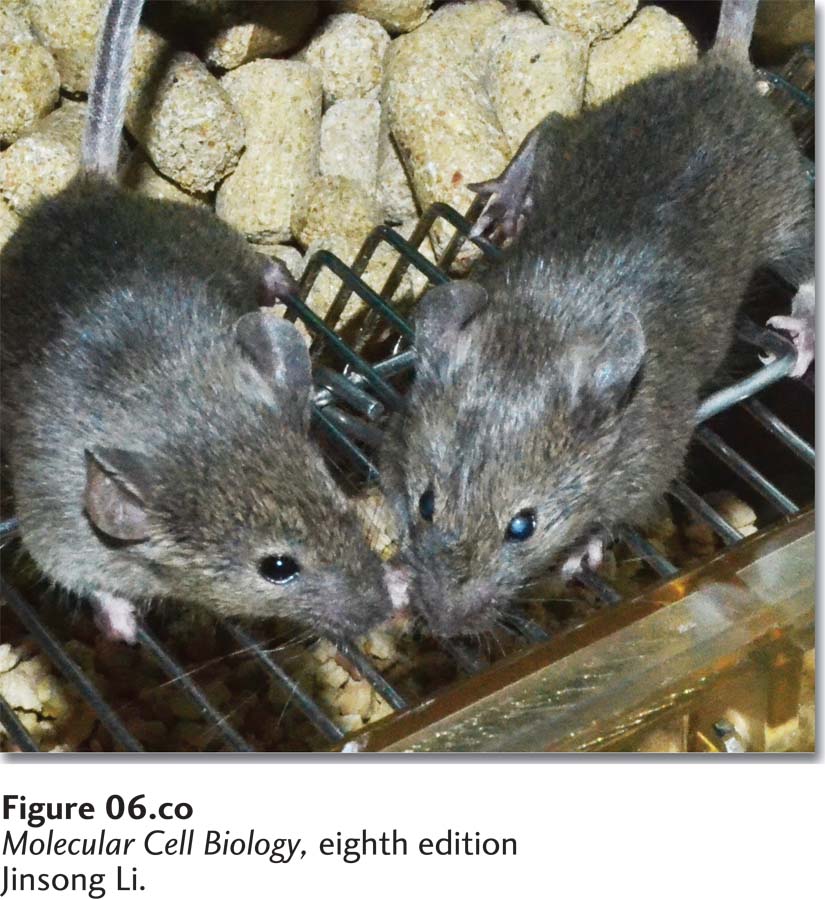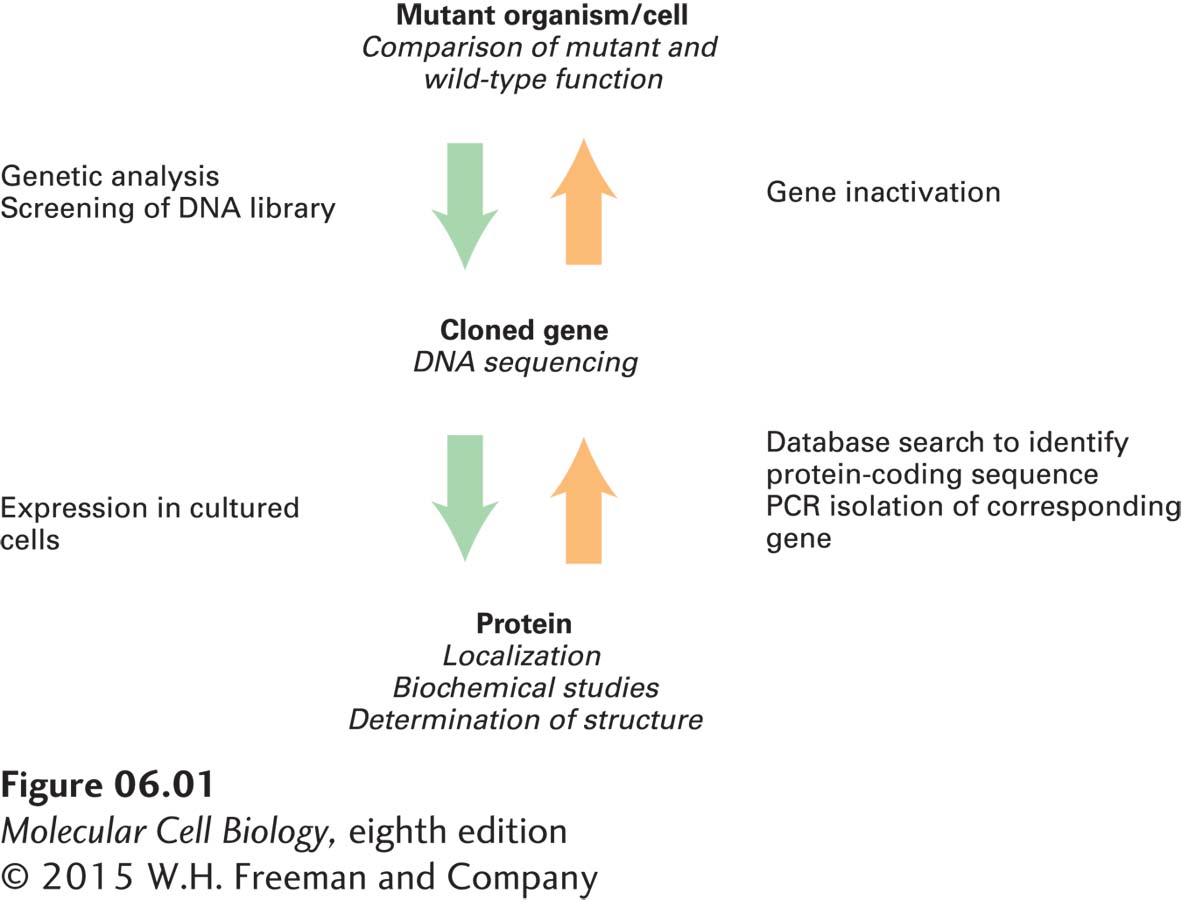Chapter Introduction
CHAPTER 6: Molecular Genetic Techniques

In the field of molecular cell biology, reduced to its most basic elements, we seek an understanding of the biological behavior of cells in terms of the underlying chemical and molecular mechanisms. Often the investigation of a new molecular process focuses on the function of a particular protein or set of proteins. There are three fundamental questions that cell biologists usually ask about a newly discovered protein: What is the function of the protein in the context of a living cell? What is the biochemical function of the purified protein? Where is the protein located? To answer these questions, investigators employ three molecular genetic tools: the gene that encodes the protein, a mutant cell line or organism that lacks the functional protein, and a source of the purified protein itself. In this chapter, we consider various aspects of two basic experimental strategies for obtaining all three tools (Figure 6-1).

The first strategy, often referred to as classical genetics, begins with isolation of a mutant that appears to be defective in some process of interest. Genetic methods are then used to identify and isolate the affected gene. The isolated gene can be manipulated to produce large quantities of the protein it encodes for biochemical experiments and to design probes for studies of where and when the protein is expressed in an organism. The second strategy follows essentially the same steps as the classical approach, but in the reverse order, beginning with isolation of an interesting protein or its identification based on analysis of an organism’s genomic sequence. Once the corresponding gene has been isolated, that gene can be altered and then reinserted into an organism. With both strategies, by examining the phenotypic consequences of mutations that inactivate a particular gene, geneticists are able to connect knowledge about the sequence, structure, and biochemical activity of the encoded protein to its function in the context of a living cell or multicellular organism.
An important component in both strategies for studying a protein and its biological function is isolation of the corresponding gene. Thus we discuss various techniques by which researchers can isolate, sequence, and manipulate specific regions of an organism’s DNA. Next we introduce a variety of techniques that are commonly used to analyze where and when a particular gene is expressed and where in the cell its protein is localized. In some cases, knowledge of protein function can lead to significant medical advances, and the first step in developing treatments for an inherited disease is to identify and isolate the affected gene, a process we describe here. Finally, we discuss techniques that abolish normal protein function in order to analyze the role of the protein in the cell.
Page 224